Darjeeling could be the next Dharali or Joshimath writes Chandrani Sinha
On a rainy morning in August, 47-year-old Dawa Lepcha stood with a newspaper in his hand at Chowrasta, Darjeeling’s famed pedestrian square. His eyes reflected his apprehension over the future of his hometown, Darjeeling. The headline of the newspaper he was reading said: “Uttarkashi’s Dharali devastated by flood.”
Tucked in the misty ridges of the eastern Himalayas, Darjeeling is famous for its colonial charm and tea gardens. The town now struggles under unchecked urbanization and climate change.
Located at the other end in the western Himalayas in Uttarakhand’s Uttarkashi district is the town of Dharali. On August 5, a cloudburst near the Kheer Ganga River triggered a flood that engulfed Dharali, sweeping away houses, hotels, and restaurants. In the name of development of the tourism industry, and despite repeated warnings from environmentalists of the dire impact of construction activity in this sensitive area, roads, hotels, and high-rise buildings have come up at a rapid pace in recent decades in Uttarakhand.
This is the case in Darjeeling and other towns in the eastern Himalayas as well.
“Like any other Himalayan town, Darjeeling was not meant for high-rises,” Dawa said. “Any construction that exceeds 11.5 meters in height is illegal. Everyone knows this. But with the town municipality itself violating its own laws, people are not respecting the law.”
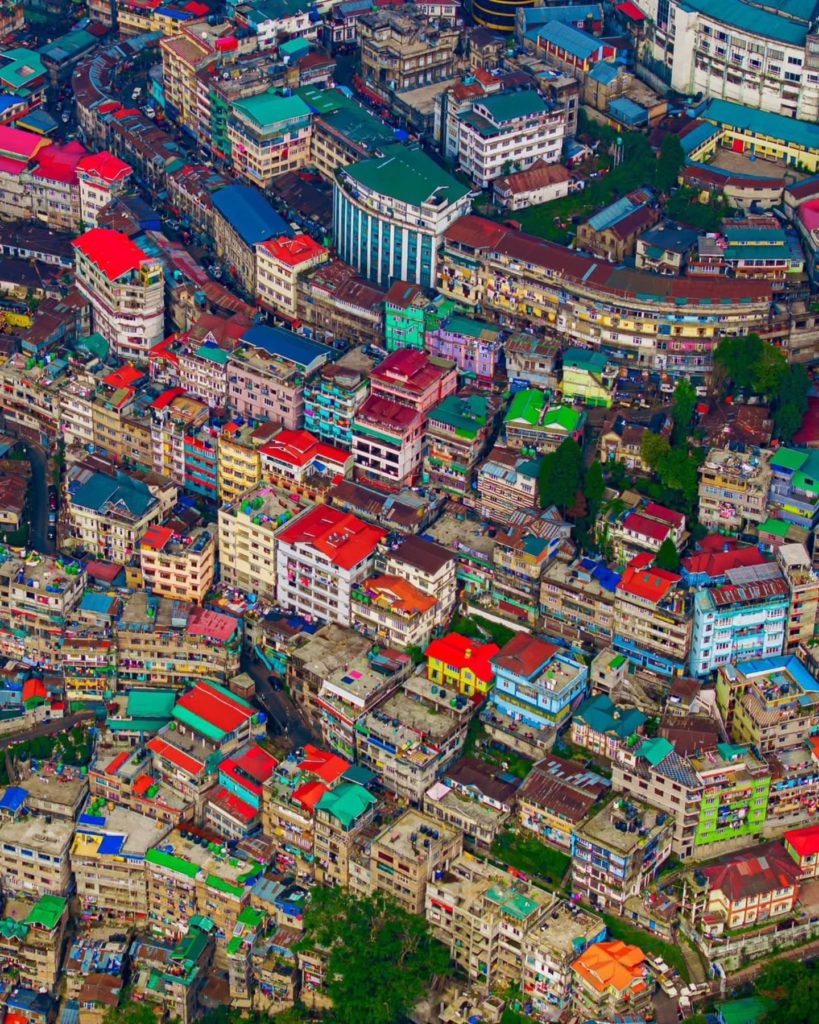
A tourist guide by profession, Dawa chose to become Darjeeling’s environmental conscience. He has filed public interest litigations and writ petitions in courts, and challenged hotel lobbies. He has faced threats to his life for trying to protect a town, which he says has been “killed by concrete and greed.”
Dawa fears that Darjeeling will one day face the fate that towns like Dharali and Joshimath have suffered.
Disasters in Dharali and Joshimath
At 2.55 pm on August 5, there was a sudden roar. It was the Kheer Ganga River hurtling toward Dharali, swallowing people, hotels, houses, and homestays in its path. Among the first to witness the disaster was Harish Nautiyal, a 45-year-old temple priest from a nearby village. “It felt like hell came down,” he said, recalling the flood.
What unfolded in Dharali wasn’t simply a natural disaster. The calamity was amplified by human negligence and intervention, satellite images reveal.
Joshimath, a pilgrimage town in Uttarakhand, India, is sinking due to alarming land subsidence. Since 2022, over 600 homes, hotels, hospitals, and temples have developed cracks, forcing locals to evacuate. The town was built on an ancient landslide debris in seismic Zone 5, which makes it geologically fragile. Subsequent poorly planned infrastructure, rapid development of tourism, tunnel blasting for roads and hydropower projects worsened its stability.
Satellite data revealed that land at Joshimath sank by 9 cm between April–November 2022, followed by another 5.4 cm of subsidence in just 12 days in January 2023, highlighting the urgency of addressing the town’s ecological and human crisis.
“This is a seismic zone,” environmental activist Atul Sati of the Joshimath Bachao Sangharsh Samiti said. “We warned the government about construction activity here for decades, but nobody listened.” Roads, hydropower projects and high-rise buildings mushroomed.
“Then one extreme rainfall and cloudburst cracked open our homes in Joshimath,” Sati recalled.
Despite clear laws prohibiting the construction of high-rise buildings near rivers within the eco-sensitive zones, unchecked development of tourism infrastructure, including hotels and homestays, has been taking place on the floodplains.
In 2013, the Uttarakhand High Court issued an order prohibiting construction near rivers, while the Bhagirathi Eco-Sensitive Zone Notification of 2012 had designated this as a protected area. Yet, both orders have been ignored.
Studies in 2020 and 2023 pointed to the dangers of stream obstruction and encroachment. But government authorities never took action on these warnings. The Himalaya Nagrik Drishti Manch, a citizen group, filed petitions with the National Green Tribunal (NGT), including Original Application No. 99/2017, which specifically warned against unchecked hotel development on floodplains. None of these appeals led to any significant enforcement.
What happened in Uttarakhand, where even court orders could not stop reckless building, is now reflected in Darjeeling, where legal tools to stop violation of the law are often ignored or suppressed.
Darjeeling’s Quest for Transparency
In Darjeeling, too, people are seeking transparency. But their efforts have hit a wall. It’s been almost two months since this writer filed multiple applications demanding information under the Right to Information Act. But they have all gone unanswered.
According to Bharat Prakash Rai, activist and founder of The Federation of Societies for Environmental Protection, “Darjeeling falls under Seismic Zone 4. The town municipality should be limiting new construction to a height of 11.5 meters. But it is not.” He said he fears that disasters like those in Uttarakhand may happen in Darjeeling in future.
The municipal rules are backed by the West Bengal Hill Areas (Preservation of Ecology) Act, 2001, which aims to protect fragile slopes from becoming unstable. The National Forest Conservation Act, 1980, also provides another layer of legal protection. To strengthen these legal measures, the Calcutta High Court has repeatedly stepped in to order action against illegal buildings. On September 27, 2024, the court issued an order for unauthorized construction on Darjeeling’s eco-sensitive slopes to be cleared.
Supreme Court lawyer Arjun Raghuvanshi pointed out that willful disobedience and construction in defiance of a court order can lead to “imprisonment, fines, demolition of structures and even the cancellation of rights or approval obtained during violation.” The Supreme Court, he said, “has made it clear in multiple rulings that illegal construction cannot be regularized by local bodies. In multiple cases, courts have also held the municipality accountable when they breach such orders, with departmental actions and contempt proceedings. “
Yet violation of the rules persists.
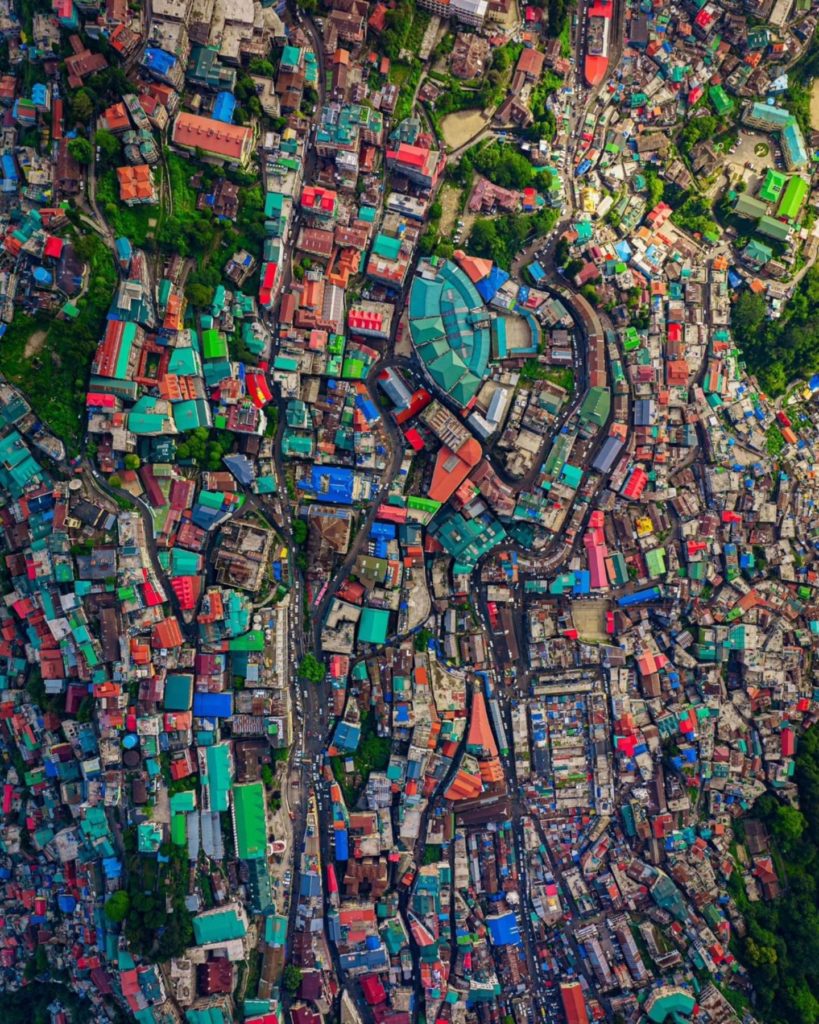
Local Governance Crisis
But laws, however robust on paper, are only as effective as the officials who should uphold them. In Darjeeling, municipal leadership often speaks a different language.
The chairman of the Darjeeling Municipality, Dipen Thakuri, said that buildings on the slopes have existed since British colonial times. He blamed the construction boom on population pressure and migration from villages to towns. “I don’t support high-rises,” he said, “but I do sympathize with the people.” They need housing.
Thakuri omitted that the laws he is meant to uphold were enacted after the colonial era, specifically to prevent exactly this kind of unsustainable expansion. His predecessors have offered similar excuses, but it was under his tenure that post-facto permits increased and demolition notices quietly disappeared.
Thakuri’s predecessors have a different story to tell.
Ritesh Portal, the former chairman of the Darjeeling municipality, said that during his tenure, he “received several complaints from tourists that the view of the Kanchenjunga peak is blocked by high-rises. We acted against illegal buildings after evaluating the risk they posed and issued 220 notices immediately.”
After stepping down from office, Portal said he has continued the fight in his personal capacity. “I was thrown out of the municipality after I started serving notices to owners of illegal buildings, one of whom is the public prosecutor. Now, as a social worker, I file public interest litigations in the high court. Its about protecting my town,” he said.
Despite multiple demolition notices, not a single illegal high-rise has been demolished in Darjeeling in the last decade. Carrying out demolitions is politically costly. In effect, notices served as bargaining chips rather than enforcement tools, leaving locals to live in high-rise buildings that the courts have declared unsafe.
Seismic Zone, Ecological Disaster, and Cloudburst Risk
When even a heavy downpour can flood Darjeeling due to its poor drainage, the impact of a cloud burst, which results in at least 100 mm of rain in an hour, would be catastrophic. Darjeeling’s slopes comprise sheared, folded, and jointed metamorphic rocks and schists, reducing their structural integrity and making them highly susceptible to water infiltration. Consequently, it often faces extreme rain-induced disasters.
Besides, it is an earthquake-prone area. Its steep slopes and soft soil make both older buildings and new high-rises especially vulnerable. Darjeeling’s vulnerability is heightened by its high seismicity, heavy monsoon rains, and urban development, which together heighten the chances of structural damage and landslides, underscoring the urgent need for earthquake-resistant city planning.
According to Jayanarayanan Kuttippurath, climate scientist and associate professor of the Indian Institute of Technology, Kharagpur, “Landslides and floods are the biggest problems in these regions. So, if buildings are constructed on slopes without assessing the potential damage from heavy rains and landslides, it could cause a disaster.”
With “towns in the Himalayan region witnessing unplanned and unbridled urbanization, things could get worse if the buildings are on the slopes, without considering the flood and landslide potential in the area,” he said. Approximately 22-34 percent of the Darjeeling district is at high risk of landslides, according to recent studies. It is very vulnerable to disasters triggered by cloudbursts, similar in potential destruction to the recent flood at Dharali, but caused by different factors.
Yet, even as the mountains groan under ecological strain, another force pushes the skyline higher: the irresistible lure of tourism money.
The Economy Behind High-Rises
According to West Bengal Tourism, Darjeeling receives nearly 680,000 tourists annually, with peak occupancy in April–May and October. These numbers explain why rooms and illegal floors are being added, as these translate into profits.
Tourist Rajat Ghosh, 27, said that he “paid $85.60 for a room this year, which usually costs around $22.83. In peak season, nobody questions rates as one just grabs what’s available.” This explains why buildings grow upward despite court orders to halt construction.
“What happened in Dharali and Joshimath will happen here in Darjeeling,” said politician Ajoy Edward, who founded the Indian Gorkha Jansakti Front. Explaining the mushrooming of high rises on the town’s slopes despite court orders, he said that “a single unauthorized/illegal high-rise floor converted into a hotel or flats can earn millions of rupees within a fortnight.”
Land prices in Darjeeling’s Mall Road, Nehru Road and Laden La areas have tripled in the past decade, driven less by tea or timber than by the booming tourist economy.

An ongoing construction on a steep slope in Merry Villa Ward No. 6 reshapes Darjeeling’s historic townscape. Credit: Akash Pradhan
“Decades of neglect and weak leadership have stripped our towns of safety and dignity — where unregulated towers rise in earthquake zones and families migrate to other places for work. To survive, we must reimagine the basics through bold, climate-resilient, community-driven action,” said Vidyut Jain, joint secretary of Darjeeling’s Chamber of Commerce.
For hoteliers and contractors, the profits are irresistible: an illegal 40-room tower for either flats or hotels can generate a huge sum of money, enough to run several generations of a family.
Darjeeling Shouldn’t be the Next Dharali
“The mountain is sending us signals,” said Dawa. “In Dharali, the river engulfed hotels; in Joshimath, the earth cracked. If we don’t heed the signals, Darjeeling might be next.”
Darjeeling’s case is not an isolated one. Its problems are visible from Kashmir in the western Himalayas to Sikkim in the eastern Himalayas. From Nepal’s Melamchi to Uttarakhand’s Joshimath, the trend repeats itself across the Himalayas.
In Shimla, hotels collapsed during the 2023 monsoon. In June this year, Gangtok and Sikkim’s Teesta valley, cloudbursts tore apart dams and towns. On the other side of the border in Nepal, flooding of the Melamchi valley, which was compounded by unchecked construction, entombed homes and land in mud and slush. From Manali to Mustang, from Joshimath to Darjeeling, the cycle is the same: weak slopes, flouted laws, muffled voices.
What endures is the silence of the government and the tenacity of the common people. Meanwhile, families lie awake in fear that cracks will grow in their walls, and activists like Dawa, holding court documents and armed with profound affection for their town, soldier on.
As the fog closes in over Darjeeling, the words of Dawa hang like a shadow: “Darjeeling must not be the next Dharali or Joshimath. If we preserve it, perhaps we preserve the Himalayas as well.”
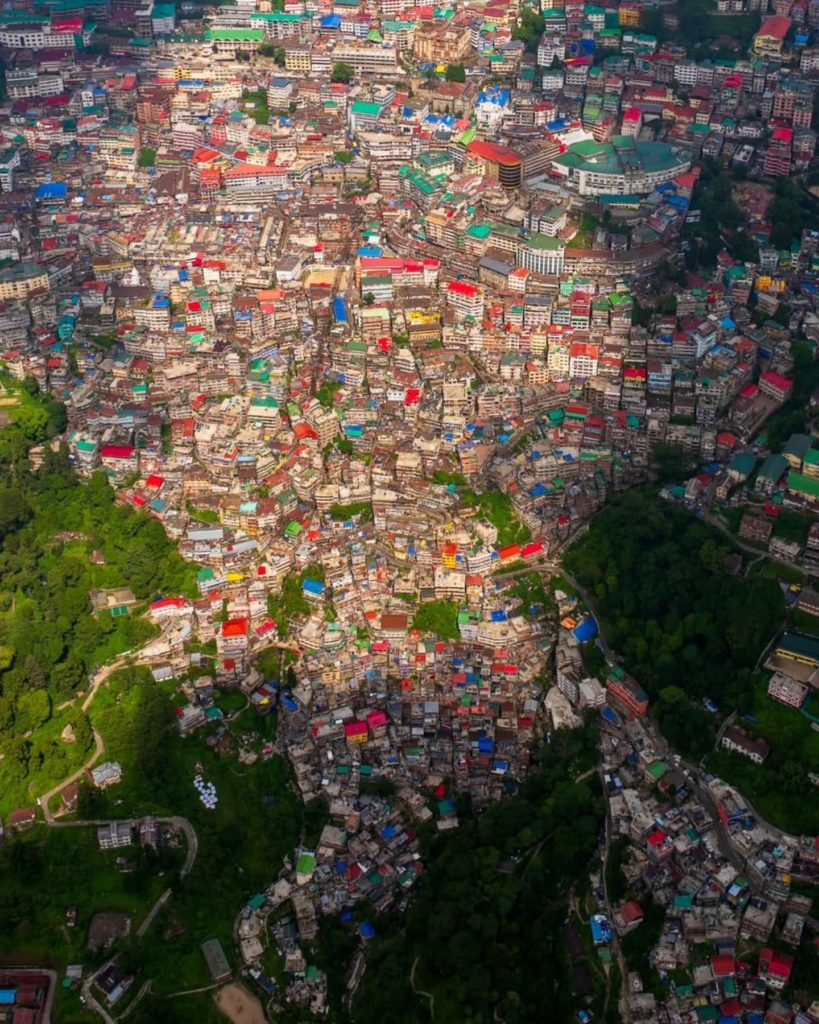
The Author Chandrani Sinha is an award-winning independent multimedia journalist based in Guwahati, Assam, India, with over a decade of experience reporting on climate change, health, and environmental issues. Her work has been featured in prominent outlets like The Third Pole, Washington Post, and Climate Home.
We are most grateful to ace photographer Raj Mohan, for kindly permitting us to use his beautiful pics to illustrate the article. Raj is a travel and landscape photographer based out of Chennai and currently living in Bangalore, India.
We are also grateful to Vivek Ghalay for permitting his pic, which has been used for the cover pic
This article was originally published in The Diplomat and has been republished here with permission

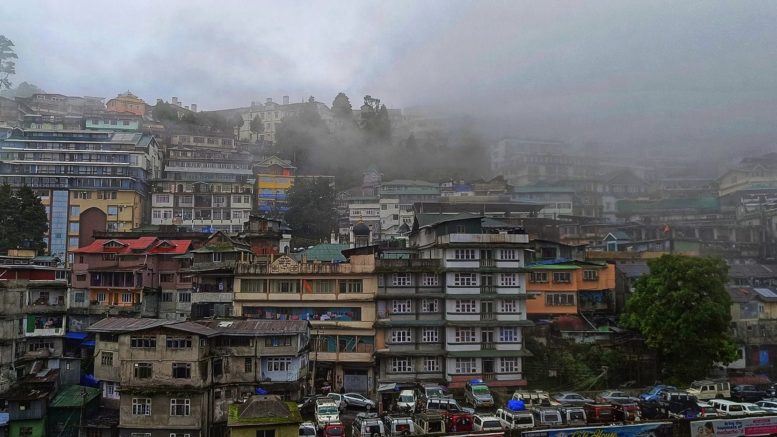


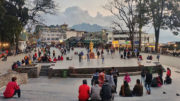

Leave a comment